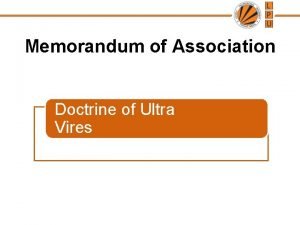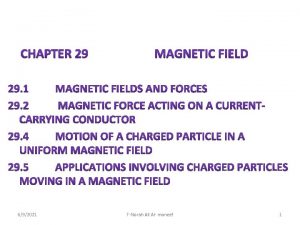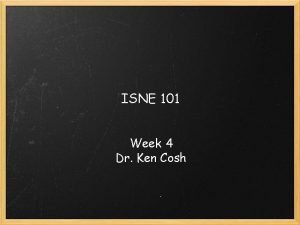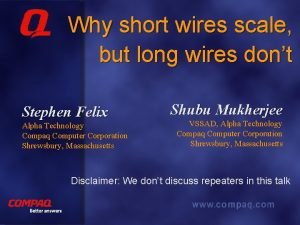Molecular Electronics Molecular Electronics Tour wires Various molecular







- Slides: 7

Molecular Electronics

Molecular Electronics • • • Tour wires Various molecular switches Various carbon nanotube devices Metal/semiconductor nano-wires Potential problem areas: See plastic transparencies, readings for details – High resistance of some molecular devices. – Maintaining thermal reliability in face of low node capacitances and voltages. – High leakage currents, due to tunneling or thermal excitation over small, narrow barriers.

Organic Molecules • Schon/Meng/Bao, Bell Labs group • Weiss@PSU, Reed@Yale – Single-molecule switching, Science 22 Jun. ‘ 01

Carbon Nanotubes • Dekker group, Netherlands – Nanotube transistor, 1998 • IBM research – Nanotube NOT gates, June 2001

Nano semiconducting wires • Lieber group, Harvard – Si/Ga. N semiconducting wires, few-nm diameter – p-type & n-type wires, logic gates

Biochemical computing • Selected points on DNA computing: – Adleman’s experiment – Cyclic Mixture Mutagenesis • Reversible DNA Turing Machines See readings for details – Seeman’s self-assembling structures – Winfree’s tile self-assembly logics • DNA computing has many disadvantages: – High cost of materials – Slowness of diffusive molecular interactions – Slowness/cost/unreliability of lab steps • Prob. won’t ever be a cost-effective computing paradigm (except maybe for in vivo apps)

Optical computing • Not viable at the nanoscale anytime soon! – Due to entropy density issues mentioned earlier: • High enough info. flux requires extremely energetic photons, with too-high effective temperatures • Or, waveguides considerably smaller than photon wavelengths - EMF theory suggests: Impossible! • All-optical computing requires nonlinear interactions, between photons & materials. • Optics (or more generally, EMF waves) will remain useful for communications, but only: – in contexts where extreme bandwidth density is not required (or extreme temperatures can be tolerated)













